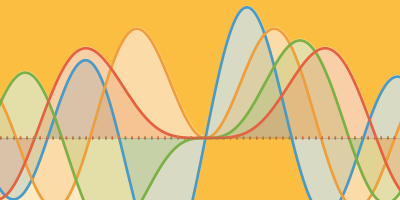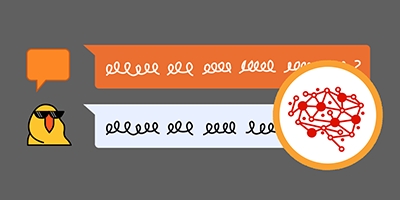Learn Complex Analysis Today with Wolfram Language

Complex analysis is a versatile tool that is used extensively in science, engineering and other fields. It is also a beautiful topic in and of itself. Hence, a course in complex analysis is a standard part of the curriculum for physics and engineering students and a stepping stone for more advanced topics in mathematics.
Wolfram Language provides an ideal environment for studying this captivating subject thanks to its built-in computational capabilities, both symbolic and numerical, as well as its powerful visualization tools.
Today, I am proud to announce a free interactive course, Introduction to Complex Analysis, that will help students all over the world to master this wonderful subject.
The course is a basic introduction to the subject. It covers the elementary functions, the Cauchy–Riemann equations, complex integration, Cauchy’s theorem and the residue theorem. The emphasis is on visualization and hands-on exercises rather than on comprehensive proofs. The level is suitable for a first course aimed at undergraduate students.
Clicking on the following image, which links to the course, lets you explore its content.
Motivation from History
Historically, complex numbers were first used in early investigations of cubic equations by mathematicians such as Gerolamo Cardano (1501–1576) and Rafael Bombelli (1526–1572). However, it took a long time to realize the deeper importance of complex numbers beyond this narrow application. A major catalyst for further progress was the introduction of the complex plane by Carl Friedrich Gauss (1777–1855) and Caspar Wessel (1745–1818), which marks the beginning of the modern approach to the subject. The classic theorems central to the subject are due to Augustin-Louis Cauchy (1789–1857), Bernhard Riemann (1826–1866) and Karl Weierstrass (1815–1897).
Overview
Students taking the course will receive an introduction to complex analysis starting from the basic definition of complex numbers and their elementary operations, then to complex limits and derivatives, analytic functions, complex integration, harmonic functions, residues, and Taylor and Laurent series.
A final section consists of chapters that can be studied independently of one another. It is a sampling of more advanced topics (transcendental equations, the gamma function, elliptic functions and others), which hopes to inspire the student to further explore the subject.
The course framework can be viewed in the following image.

The course consists of lessons, exercises and quizzes designed to help you master all the fundamentals of this subject.
Necessary mathematical prerequisites for the course are exposure to single-variable and multivariable calculus.
Let’s see in more detail what the course looks like.
Lessons
The course is organized in 30 lessons. Each lesson consists of a video and its written transcript. Along with the video, each lesson is also covered by a book chapter that expands the discussion further, at times containing proofs or related points not discussed in the video.
The first lesson, “What is Complex Analysis?”, is a historical introduction to the topic and tells the story of the first calculations using complex numbers.

Later lessons contain numerous solved examples, often illustrating the use of Wolfram Language code and functionality, such as visualization functions being used to provide insight into the global behavior of mappings in the complex plane.
Lesson videos range from 9–18 minutes in length and are accompanied by a transcript notebook. These notebooks can either be downloaded or viewed in the browser. Students can experiment with them and try the examples in a scratch notebook directly in the browser on the same webpage as the video.
Exercises
Each lesson contains five exercises that review the material covered in the lesson. The solutions are provided, sometimes in the form of Wolfram Language code.
For example, below is an exercise from Lesson 23 making use of the built-in Wolfram Language symbol, Residue.

Students can experiment with Wolfram Language notebooks and try variations of the exercises or adapt the code to their own explorations.
Quizzes
The 30 lessons of the course are grouped into nine sections. Each section ends with a quiz with six multiple-choice problems reviewing the material contained in the section. The level of difficulty is roughly the same as that of the lesson exercises; the quiz is intended to help students with reviewing the main points of the section.

The quiz provides feedback about the correctness of the answers.
Students are encouraged to use any method to solve the quiz problems, whether by hand or using Wolfram Language. A scratch notebook is provided for that purpose on the right-hand side of the quiz webpages.
Course Review
One of the difficulties with studying a subject like complex analysis is that a vast number of new concepts and theorems need to be mastered in a short period of time. To help you in reviewing the course material, the course concludes with a final review lesson titled “Complex Analysis in a Nutshell.”

Course Certificate
Students who finish the course and pass all the quizzes can get a certificate of completion.

A final exam is also available at the end of the course. Passing it entitles the student to a Level 1 certification for proficiency in complex analysis. It’s easy to track which videos you’ve completed and the status of your quizzes and exam by using the “Track My Progress” section of the course. Your shareable certificates are automatically generated and immediately available to you upon completing the requirements.
A Building Block for Success
A thorough understanding of complex analysis is highly desirable for students not only in mathematics but also in physics and engineering. This course aims to help students master the basics of complex analysis and to provide a solid foundation for their further studies.
Acknowledgements
I would like to thank Devendra Kapadia, Anisha Basil, Joyce Tracewell, Cassidy Hinkle, Roger Germundsson, Brett Champion, Bob Owens, Ryan Domier, Mariel Laugesen, Naoko Glowicki, Jay Warendorff, Paige Vigliarolo, Tim Shedelbower and Bailey Long for their work on various aspects of the course.
| Register for Wolfram U’s Daily Study Group: Introduction to Complex Analysis. |




Comments